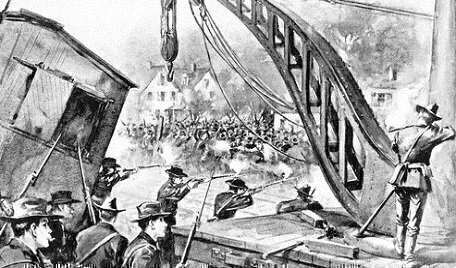Labor Day began in the United States when the Central Labor Union and the Knights of Labor organized a march in New York City attended by about 10,000 workers on Sept. 5, 1882 – at the time when factory workers averaged six 10-hour workdays per week.
Labor unrest increased with the 1886 Haymarket riot in Chicago and the 1894 Pullman Railroad Strike in 1894, which left more than a dozen workers dead when the federal government intervened in the strike on the side of the Railroad. Democratic President Grover Cleveland made Labor Day a national holiday later that year in response – in what has been considered an effort to regain the trust of workers.
Historians have pointed out that the September date was chosen in order to dissociate it from May Day, which in America was rather simplistically linked with socialist and radical labor movements in other countries. In spite of its status as a national holiday, workers in the United States did not enjoy the right to join a union until the passage of the National Labor Relations Act of 1935.











